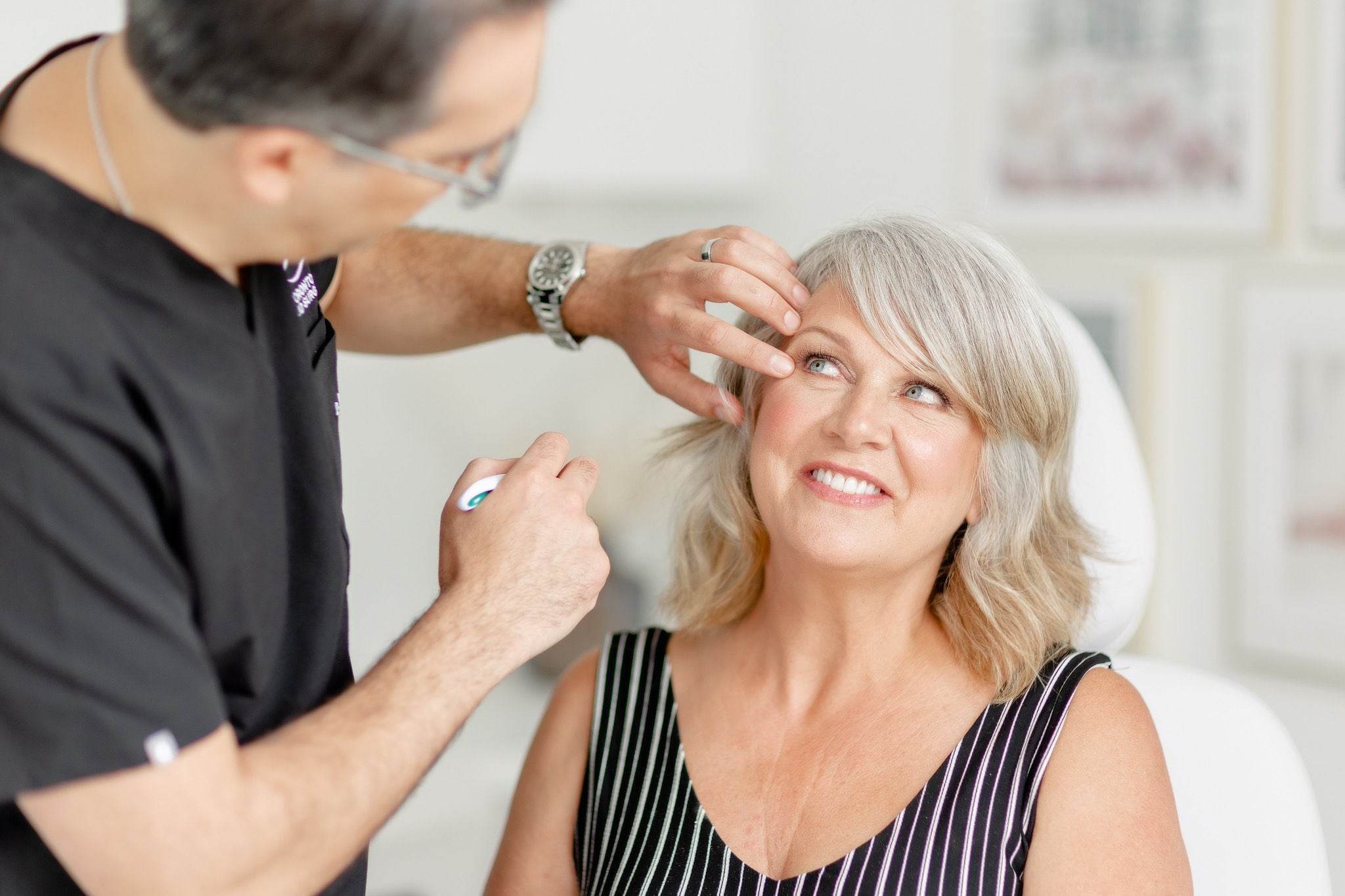Patient Care Instructions
Here, you’ll find FAQs, forms, pre and post-procedure instructions, all designed to guide you through your journey with Dr. Maleki.
Pre Op instructions
Download PDF 📄Blepharoplasty Post OP instructions
Download PDF 📄Brow lift Post op instructions
Download PDF 📄Laser pre and post instructions
Download PDF 📄Fat Grafting instructions
Download PDF 📄Forms
Select a form to begin your treatment experience.
FAQs
The recovery time for eyelid plastic surgery varies depending on the extent of the procedure and individual healing factors. Here’s a general timeline:
Week 1
- Swelling and bruising peaks around day 2 or 3.
- Mild discomfort, tightness, or dryness around the eyes.
- Use cold compresses and keep your head elevated to reduce swelling.
- Best to avoid exercise, bending over and heavy lifting
- Stitches (if non-dissolvable) are usually removed around day 7
Week 2
- Majority of the swelling and bruising will subside
- Many patients feel comfortable returning to non-strenuous work around day 7-10
- Avoid makeup and contact lenses until cleared by your surgeon.
Week 3-4
- Residual swelling continues to fade.
- Scars may still appear slightly pink but will improve over time.
- Most patients resume normal activities and light exercise.
3 Months & Beyond
- Final results become more visible as swelling fully resolves.
- Scars continue to mature and fade over 6-12 months.
If combining eyelid surgery with fat transfer, laser resurfacing, or other procedures, the recovery may be slightly longer. Following post-op instructions, avoiding strenuous activities early on, and maintaining hydration can speed up the healing process.
Scars after eyelid surgery are typically very discreet due to precise surgical techniques and the natural creases of the eyelids. Here’s what to expect:
Upper Eyelid Surgery (Upper Blepharoplasty)
- The incision is placed in the natural crease of the upper eyelid, making it nearly invisible when the eyes are open.
- Over time, the scar fades and blends with the surrounding skin.
Lower Eyelid Surgery (Lower Blepharoplasty)
- If excess skin needs to be removed (i.e. Skin pinch), the incision is placed just below the lash line, where it becomes barely noticeable as it heals.
- If only fat is being removed or repositioned (without skin excision), an internal (transconjunctival) incision is used inside the eyelid, leaving no visible scar.
Scar Healing Timeline
- First few weeks: The scar may appear pink or slightly raised.
- 1-3 months: The scar flattens and fades.
- 6-12 months: The scar continues to improve and becomes nearly imperceptible.
How to Minimize Scarring
- Follow post-op care instructions carefully.
- Use the silicone scar cream provided in your post-surgery kit.
- Avoid sun exposure on healing scars to prevent pigmentation.
- If raised scars persist, laser treatments can help breakdown and flatten the scar tissue.
The results of eyelid surgery are long-lasting, however, they do not stop the natural aging process. The longevity of Upper Blepharoplasty is typically 10-15 years or longer. Some patients may never need a second procedure, while others might develop new sagging over time due to aging and skin laxity.
Lower Blepharoplasty results are usually longer-lasting, often permanent because fat removal or repositioning is stable over time. Skin and muscle laxity may progress with aging, but recurrence of under-eye bags is rare.
Eyelid surgery is generally not very painful, but patients may experience some discomfort, tightness, and swelling during the healing process.
Dr. Maleki performs the majority of his surgeries under Local anesthesia (with sedation). This ensures that although you are awake, you are relaxed and do not feel any pain during surgery.
Immediately After Surgery
- Mild tightness, soreness, and a sensation of dryness in the eyes are common.
- Some burning or stinging may occur as the anesthesia wears off.
Pain is usually minimal and well-controlled with Tylenol (acetaminophen) or other mild pain relievers.
- Days 1-3: Redness, swelling, and a sunburn-like sensation. Skin feels tight and may ooze slightly.
- Days 4-7: Peeling begins, revealing fresh new skin underneath. Redness starts fading.
- Day 7-10: Skin starts re-epithelializing and most patients can wear makeup and return to normal activities.
There is no perfect age for eyelid surgery—it truly depends on individual anatomy, genetics, and aging. However, here’s a general guide based on common concerns:
30s-40s: Early Signs of Aging or Hereditary Concerns
- Patients in this age range often seek lower blepharoplasty for under-eye bags, which may be genetic rather than age-related.
- Some individuals with mild upper eyelid hooding may consider early intervention.
- Fat repositioning or removal (rather than skin excision) is often enough at this stage.
40s-60s: Most Common Age for Blepharoplasty
- This is the most popular age group for eyelid surgery, as skin laxity, drooping upper eyelids, and under-eye hollowness become more noticeable.
- Many patients combine blepharoplasty with fat transfer, laser resurfacing, or brow lifts for a more comprehensive rejuvenation.
60s and Beyond: Functional & Aesthetic Improvement
- Excess upper eyelid skin may obstruct vision, making surgery both a functional and cosmetic improvement.
- Skin elasticity is reduced, so additional procedures like CO₂ laser resurfacing may be recommended for optimal results.


